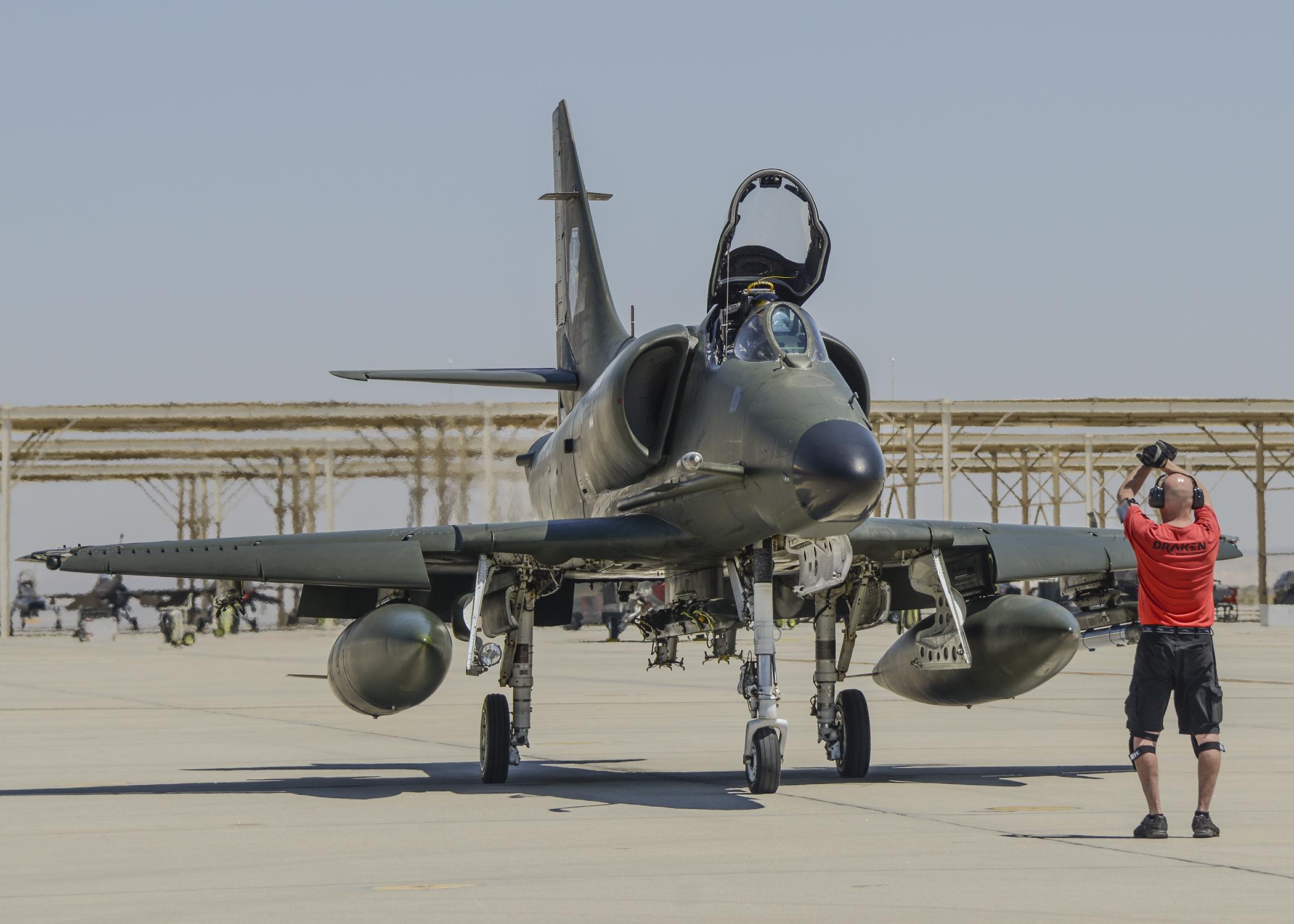
The U.S. Air Force has decided to not renew an ongoing contract with Draken International for adversary air training at Nellis AFB, Nevada, because it has determined the contractor’s jets can no longer provide the effective training it needs.
Since 2015 Draken has flown “enemy aircraft” for high-end training events at the Nevada Test and Training Range, in exercises such as Red Flag and for the U.S. Air Force Weapons School. In 2018, the company received another $280 million to continue that training, and the contract expires this summer. The service decided to not renew the contract, and Draken has posted notices that it will lay off employees in Nevada as the contract expires.
While red-air companies such as Draken “do wonderful work for the Air Force, especially at our formal training units . . . where we train basic fighter pilots how to fly,” they aren’t effective against jets like F-22s or F-35s, Lt. Gen. David Nahom, the service’s deputy chief of staff for plans and programs, told the Senate Appropriations defense subcommittee on May 17.
Draken’s fleet includes aircraft such as A-4 Skyhawks, L-159As, Dassault Mirage F1s, MiG-21BIS and Atlas Cheetahs. The company also has begun buying F-16s. The contracted jets fly about 65% of the adversary flight hours, Sen. Jacky Rosen (D-Nev.) said, adding that letting the contract expire will leave a gap for training at the Nevada range.
“What we’re finding now though is these contracts aren’t very effective at Nellis in that high-end training environment,” Nahom said.
With more fifth-generation fighters coming to Nellis, the service is augmenting the contracted jets and its own aggressor F-16s with more of the service’s F-35s and F-22s. This training is needed as China brings on its own advanced aircraft.
“Five, six years ago we wouldn’t be talking about F-35s being adversary air because our adversaries didn’t fly fifth-generation airplanes,” Nahom said. “Well, the Chinese do now. So as the China threat has stepped up, we have to step up our replication.”
The Air Force relies on the range in Nevada and the Joint Pacific Alaska Range Complex for higher-end training, and “that contract, what they’re providing is not meeting what we need,” Nahom says.
To fill the gap, the service also is looking at more simulation training and virtual-constructive systems to replicate more threats.





